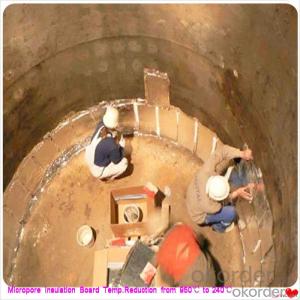Welcome to the world of DIY home improvement! Today, we’re diving into a project that might seem intimidating at first, but trust me, by the end of this guide, you’ll be a pro at connecting flexible ducts. So, grab your tools, put on your thinking cap, and let’s get started!
The Basics: Understanding Flexible Ducts
Flexible ducts, also known as flex ducts, are a type of air duct made from flexible materials, usually fabric or metal. They’re designed to make installation easier and more adaptable in various spaces. They’re commonly used in residential and commercial HVAC systems to distribute conditioned air throughout a building.
Why Connect Ducts?
There are several reasons you might need to connect ducts. Perhaps you’re installing a new HVAC system, upgrading an old one, or maybe you’re just trying to improve air circulation in your home. Whatever the reason, connecting ducts correctly is crucial for efficient airflow and system performance.
Gathering Your Tools and Materials
Before you begin, make sure you have everything you need. Here’s a list of the basic tools and materials you’ll require for this project:
– Flexible ducts (of course!)
– Duct tape or mastic sealant
– Duct connectors or clamps
– A measuring tape
– A sharp knife or utility cutter
– A pair of scissors
– A marker or pen
– Safety goggles and gloves
Measuring and Cutting the Ducts
The first step in connecting ducts is to measure and cut them to the right size. Use your measuring tape to determine the length of duct needed for each connection. Mark the measurements with a marker or pen, and then use your sharp knife or utility cutter to make clean, straight cuts. Remember to wear your safety goggles and gloves to protect yourself.
Aligning the Ducts for Connection
Once your ducts are cut, it’s time to align them for connection. This is where patience and precision come into play. Make sure the ends of the ducts are clean and free of any debris that could obstruct airflow. Then, carefully align them so that they fit snugly together.
Securing the Connection
Now that your ducts are aligned, it’s time to secure the connection. You have two main options here: duct tape or mastic sealant. Duct tape is quick and easy, but mastic sealant provides a more secure and long-lasting bond. Apply the tape or sealant according to the manufacturer’s instructions, ensuring a tight seal.
Using Duct Connectors or Clamps
For a more professional and secure connection, consider using duct connectors or clamps. These devices are designed to hold ducts together firmly and can be adjusted to fit different sizes of ducts. Follow the manufacturer’s instructions for attaching the connectors or clamps to your ducts.
Inspecting Your Work
After you’ve made the connection, take a step back and inspect your work. Look for any gaps or leaks that could compromise the airflow. If you find any issues, don’t hesitate to make adjustments or reapply the sealant as needed.
Testing the System
Once you’re satisfied with your connections, it’s time to test the system. Turn on your HVAC system and observe the airflow. Listen for any unusual noises that could indicate a problem. If everything sounds and feels right, congratulations! You’ve successfully connected your flexible ducts.
Troubleshooting Common Issues
If you encounter any issues during the process, don’t worry. Here are some common problems and their solutions:
– Leaks: If you notice leaks around the connections, reapply the sealant or tape. Make sure the seal is tight and complete.
– Poor Airflow: If the airflow is not as strong as it should be, check for any obstructions in the ducts or leaks that could be causing the issue.
– Difficulty in Cutting: If you’re having trouble cutting the ducts, try using a different cutting tool or technique. A sharp utility cutter or a sharp knife can make all the difference.
Maintenance and Care of Flexible Ducts
Proper maintenance and care can prolong the life of your flexible ducts and ensure optimal performance. Here are some tips:
– Regularly inspect the ducts for any signs of wear or damage.
– Clean the ducts as needed to prevent dust and debris buildup.
– Replace damaged ducts promptly to maintain airflow and system efficiency.
The Joys of DIY: Personal Touch and Pride
One of the best parts of DIY projects is the personal touch you can add to your home. Whether it’s choosing the color of the duct tape or the pattern on the mastic sealant, there’s something satisfying about making something work for you. And when you see that air flowing smoothly through your newly connected ducts, the pride in a job well done is unbeatable.
Final Thoughts
Connecting flexible ducts might seem like a daunting task, but with the right tools, a bit of patience, and a lot of care, you can master this skill. Remember, practice makes perfect, and don’t be afraid to ask for help if you need it. Happy duct connecting!

